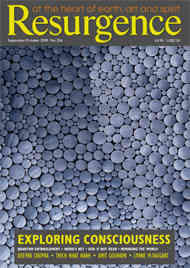When, as a newly-wed, I first found myself faced with the responsibility of caring for a garden, I asked my mother-in-law how I could tell what was a weed and what was not. “Easy,” she replied. “Pull it up, and if it comes back it was a weed!” I didn’t actually take her advice, and over the years I have enjoyed an exuberance of flora in my garden, with many of the beautiful flowers called “weeds” by some.
It is no surprise, therefore, that I welcomed Weeds and Wild Flowers with open arms. Not only is this a book of poetry by one of the UK’s finest poets writing today, but it also presents a series of delightful etchings of wild flowers by the artist Jessica Greenman. As Alice Oswald explains in her brief introduction, this is not an illustrated book, but rather two separate but connected books: one of poetry and one of etchings. In fact it is fair to say that very few of the etchings illustrate the flowers celebrated in the accompanying poems. Instead they stand alongside in dignified independence.
Oswald is a courageous poet, claiming subjects and styles that would strike fear into most other contemporary writers. In these poems she takes all the risks of anthropomorphism, as she enters into the characters of her chosen flowers. It shouldn’t work, but without a doubt it does.
Mother of Thousands repeatedly sighs
“No rest for the wicked”.
Scarious Chickweed stands nervously beside the road,
“Only his hands, poor wilted hands,
winding and strangling a
sweetwrapper
while he tremblingly stands.”
And Stinking Goose-foot
“Has no bath.
keeps his socks in a bag
that he hangs on a nail by the door.”
Not only do the poems ring with delicate rhyme sequences, but they are also enlivened by humorously apt descriptions, such as the Hairy Bittercress, who ought to drink less, muttering
“Blithering business!
When she pulls off her tights
And sits with her white feet bare
And her legs a-prickle with hair.”
So many of the pithy descriptions with which Oswald peppers her poetry stick in the mind forever. My own experience of Nature has been partly re-formed by new and interesting conjunctions of words and images in her earlier poetry collections, and this new book does not disappoint in this regard. So the winter solstice will now be marked for me:
“It was the darkest day,
as if the sun was an aspirin
being sucked away.”
And the appearance and nature of Bastard Toadflax is neatly summed up in the lines
“Pushes pudge of tongue-tip
Into bulge of lower lip.
Loves tickling.
Gets terrible itches.”
Some of the flowers are rather strange choices: I would not have thought, for instance, that Mother of Thousands, normally met as a cactus-like house plant, would count as a wild flower amongst a group that contains the daisy and the snowdrop. But no doubt these flowers, with strongly defined personalities, presented themselves to the poet and left her no choice as to whether they would be included.
Greenman’s etchings are equally engaging, and in her introduction she draws a parallel between the way in which she has responded to the various flowers and the physical process of etching through the use of ferric chloride on a metal plate.
The conjunction of poems and etchings throws light on an interesting difference of presentation. While each etching bears the date on which it was produced, the poems, as is customary, do not. Many poets do date their work in their own records: in a book that is not afraid to break with conventions, perhaps it would have added an extra dimension to carry the dates of the individual poems.
This is not a book to be read quickly and put aside, but one that should be kept close at hand, so that it can be returned to again and again. As with Oswald’s earlier works, such repeated exposure will reveal secrets lying below the petals of flowers or sheltering beneath the leaves.







